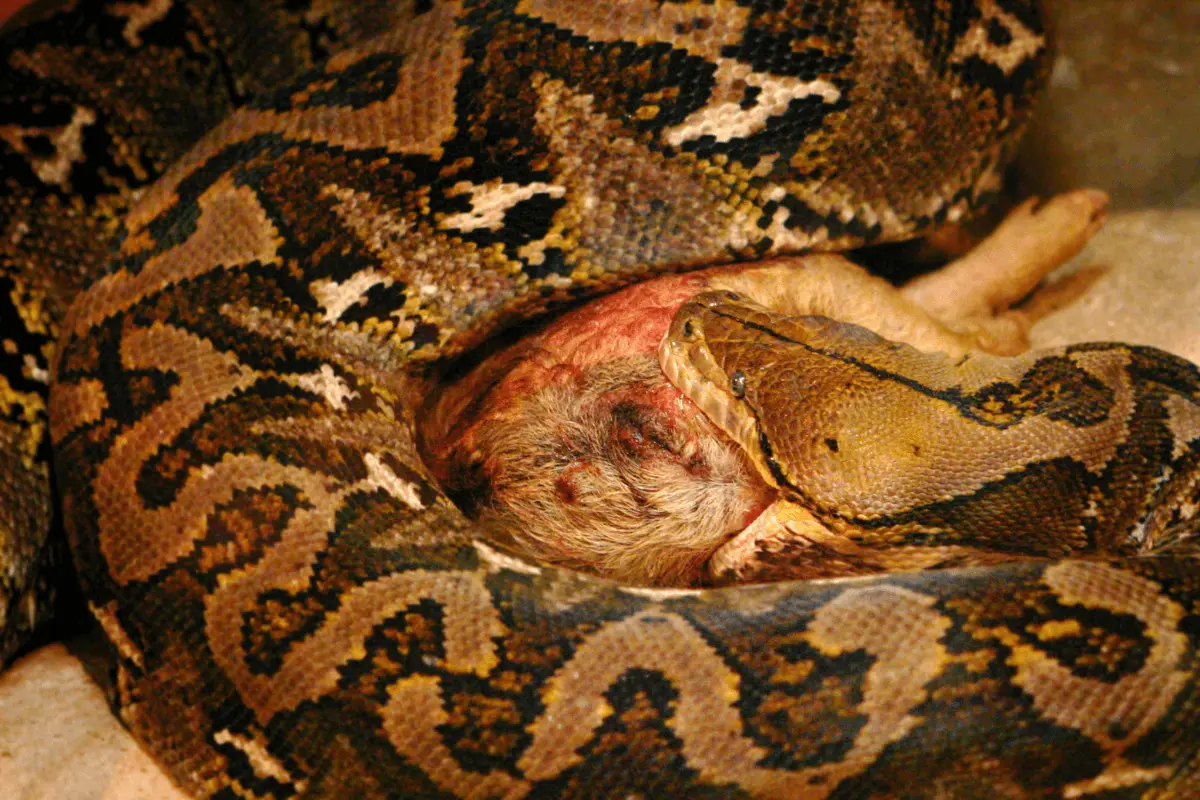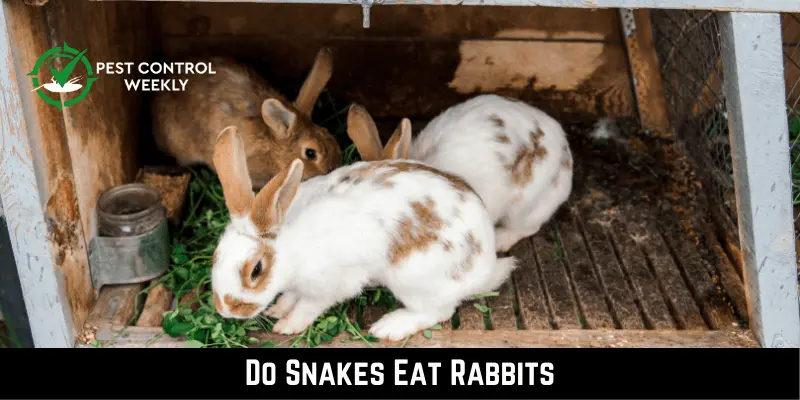When you think of a snake, what comes to mind is probably not a rabbit. Exploring the amazing world of animals, we come across a wide variety of behaviors and interactions that deserve study. One such unique relationship is between the snake and the cute rabbit, which raises the question: Do snakes eat rabbits?
Yes, some big snake species do eat rabbits. However, this basic interaction is filled with interesting challenges of hunting methods, ingestion processes, nutritional effects, and ecosystem impacts.
This article explores the world of snakes and rabbits. Discover the amazing complexity of life on Earth by decoding this unique interaction in nature.
Understanding Snake Diets
According to Agumbe Rainforest Research Station, the diets of different snake species are very interesting. Their carnivorous habits dictate that they consume a lot of protein, most of which comes from meat. Their diet consists of anything from insects and amphibians to birds and mammals, depending on the species and its size.
Cold-blooded snakes use complex processes, like constriction or venom, to kill and eat their prey, which they then eat. Even though most people think of snakes as scary, you can’t ignore the important and complicated role they play in the natural world as effective predators.
Typical Snake Diet
It’s as diverse as the snake species themselves when it comes to what they eat. Insects, frogs, and small rodents are typical diets for common snakes like the garter. Larger mammals and even reptiles have been known to become prey to larger constrictors like pythons and anacondas. Amazingly, they can open their mouths to swallow something far larger than their skull. Due to this unique quality, they are thought to be among the most amazing predators in the natural world.
Factors Influencing Snake Diet
The diet of a snake is affected by a number of factors. Both location and habitat determine prey availability. It’s also important to consider the snake’s species and size, as larger snakes can take on larger, more difficult prey. Baby snakes, being themselves smaller than their prey, often swallow them.
Lastly, snakes may change their diets briefly when certain kinds of food are only available during certain times of the year. Therefore, a snake’s food is an ever-changing facet of its existence, a delicate balancing act between external factors and the animal’s own needs for survival.
Do Snakes Hunt for Rabbits?
Yes, some snake species hunt rabbits. Let’s find out how they hunt rabbits for their meal.

Hunting Tactics of Snakes
The sneaky snake hides quietly in the bushes. Its eyes are like sharp telescopes that are finely tuned to pick up even the smallest movements of potential prey. The snake applies a complicated strategy: patience, calm, and deadly aim. Even though it has no arms or legs, its thin body works together to strike with killing force.
Its split tongue is a flexible sensor it uses to taste the air and read chemical messages to find out where its unaware prey hides. When a rabbit gets too close, the snake starts a predatory dance. The rabbit’s system is flooded with venom after a fast lunge and jaw snap. The cold-blooded strategist of nature performs a harsh but effective survival dance.
The Process of Ingesting a Rabbit
The snake feeds its prey after catching it. The snake’s ability to swallow prey larger than its head has led it to do unusual behaviors, such as swallowing a rabbit entire. The jaws unhinge and the powerful muscles contract in a wavelike motion to bring the rabbit in. The snake’s stretchy esophagus gets a lot bigger, and the rabbit’s shape changes into a moving mass that moves slowly down the snake’s long body. In the meantime, powerful digestive enzymes start breaking the rabbit into parts.
The snake’s metabolism and the size of the meal will determine how long this digestive dance will last. The snake then hides to rest and digest its meal, which might take several days or weeks. This amazing way of eating shows how nature works amazingly.
Here’s video proof, of how Boa eating live rabbits.
Snake Species That Eat Rabbits
Among the many different kinds of snakes, some of the bigger ones can eat animals like rabbits. Notably, the Burmese Python, with its huge size and incredible length, eats such big animals with great hunger. Another deadly predator, the Boa Constrictor, uses its bone-crushing coils to capture and eat rabbits.
The African Rock Python, a giant even among snakes, has been seen eating the African rabbit, which is closely related to the rabbit. The Eastern Diamondback rattlesnake in North America is large enough to hunt down rabbits. These top predators have powerful hunting tools and a big appetite. They are important parts of their ecosystems because they keep rabbit numbers in check.
The Impact Of Rabbits In A Snake’s Diet
Nutritional Benefits
Rabbits are a real meal for huge snakes. They have a high-calorie content, which is essential for the growth and reproduction of these reptiles. A single rabbit can provide enough energy for a snake’s body to function for weeks, or even months, depending on the species. There are times when the snake is well-fed, and then there are times when it goes hungry; this is an example of the feast-and-famine lifestyle. This kind of food changes how they act, making them less active after they eat. This makes them less likely to be attacked by predators.
Risks and Challenges
Prey animals like rabbits provide snakes with the essential proteins and lipids they need for growth and survival. There are risks involved in hunting such huge animals. If the snake had fought with a desperate rabbit with sharp claws, the snake could hurt itself. Also, while it is eating and processing such a large meal, the snake is slow and less able to respond quickly to danger. Snakes usually go for a long time without eating after a big meal, but they could die of hunger if they don’t find another meal in time. Rabbits are tempting prey for these scaly carnivores because their nutritional bounty frequently overcomes the risks they bring.
How To Prevent Snakes From Eating Rabbits?
Snakes hunting rabbits is a natural part of how nature works. However, measures can be taken to ensure the safety of beloved pets at home.
- Use fine mesh or solid material to create secure, snake-proof homes for rabbits. Remember that snakes are smart and can find clever ways to get out, so seal all possible entry places.
- Maintain the area regularly by clearing away any debris or overgrown plants that could serve as a hiding place for snakes.
- Use mulch or commercial repellents that are designed to keep snakes away.
- In addition, if the snake problem remains, you might want to hire an expert.
The danger that snakes offer to rabbits can be greatly reduced by making their environment less desirable to them. This keeps rabbits safe within their own homes.
What Other Animals Do Snakes Eat?
Even though some snakes have learned to like rabbits, their diets are very different, which shows how well they can adapt to different environments. Garter snakes and other small snake species eat a variety of insects, worms, and amphibians. Corn snakes are common household pets, and their diet consists mainly of rodents.
Fish and other aquatic animals are easy prey for aquatic snakes like the anaconda. The king cobra is an expert predator, and it hunts only other snakes. Big constrictors like pythons and boas eat stuff like crocodiles and big birds. In a nutshell, a snake’s diet is as varied as its geographic range, with different species adapting their hunting methods to the specific kinds of prey that inhabit their homes.
Conclusion
The strange link between snakes and rabbits shows how complex predator-prey relationships are in nature. Some snakes prey on rabbits because of their high nutrient content, which helps keep the ecology in check. Pet rabbits are at risk, but there are measures you may take to safeguard them.
Snakes can be found in various ecological settings, and their diets can range from insects to huge mammals. This shows how well they can change and how important they are to the variety of life on Earth. This relationship between snakes and rabbits shows the variety and difficulty of the natural world.

